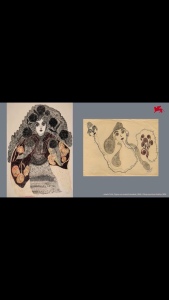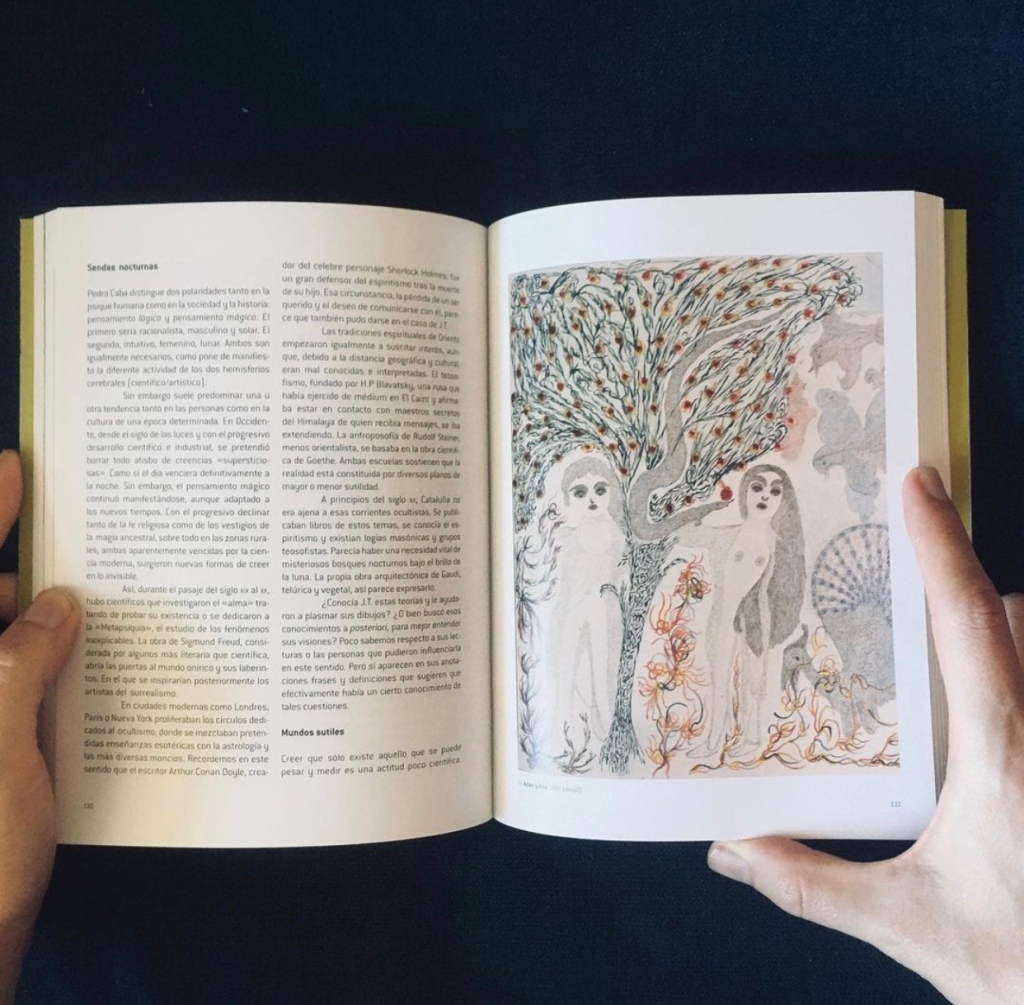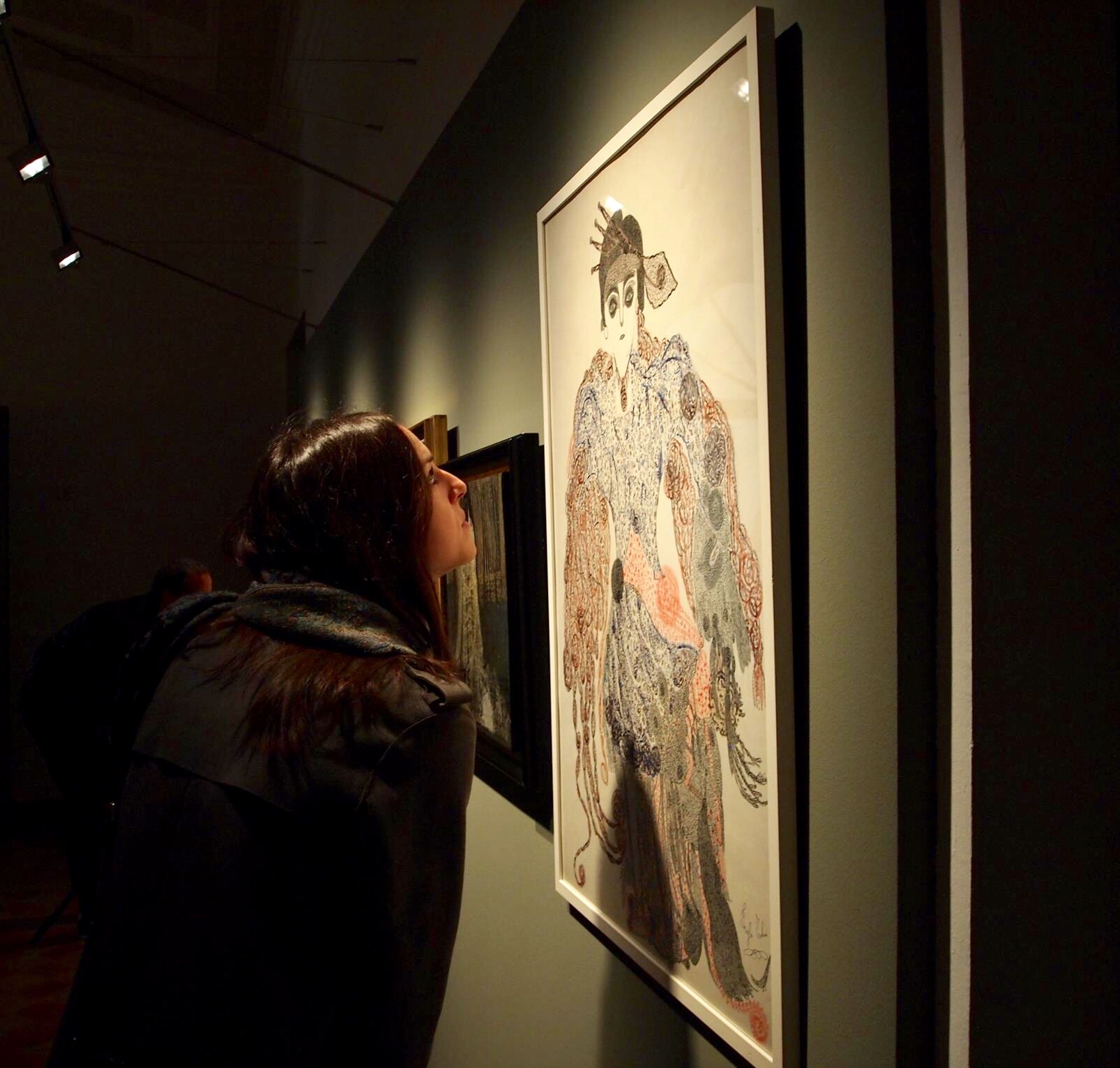
The visionary Josefa Tolrà is invited by the curator Cecilia Alemani: Biennale Arte 2022 Venezia!



Pilar Bonet Julve (ed.) Josefa Tolrà. Médium y Artista (1880-1959)
Mataró (Barcelona): Associació Josefa Tolrà / ACM, 2020.
Segunda edición ampliada [Texto en Español-Text en Català-Text in English]
21 x 16 cm / 272 pág. / color
Los dibujos de la médium Josefa Tolrà esconden imágenes y revelaciones en la profunda mirada de sus figuras.

En el reverso de un dibujo de Josefa Tolrà: «Noviembre año 1945. Dibujo sacado de la luz del progreso Espiritual inspiración. Representa arte arquitectónico año 1234»
Las iniciales P. LL corresponden a su hijo Pere Lladó, fallecido. JT corresponde a Josefa Tolrà. El medallón que prende de las iniciales representa un ser de luz.

A l’occasion d’une session spéciale, réservée à des invités, la Sala Gaspar de Barcelone inaugure, au début de l’année 1956, une exposition des dessins de Josefa Tolrà.
Une activité programmée par les amis du Club 49, amateurs de la clandestinité et des labyrinthes de l’inconscient. Artistes, mécènes, critiques et amis se réunirent pour visionner et admirer les dessins d’une femme quasiment octogénère, inconnue des milieux académiques et culturels, qui dessine des figures mystérieuses en état de transe. L’exposition est noturne, privée et courte. Une occasion exceptionnelle pour un personnage inédit.
Josefa Tolrà, «la merveilleuse dessinatrice Pepeta Tolrà de Cabrils», comme la décrit le critique Alexandre Cirici-Pellicer, est un personnage fascinant parmi les artistes du groupe Dau al Set et les membres du Club 49. Une artiste autodidacte qui commence à dessiner à ses 70 ans, sans soif de notoriété, loin du monde officiel de l’art, proche de l’univers astral.

Their art does not come from art, that is the basic premise. Their concerns are not artistic or commercial. The materials are poor, fragile… They use the wrapper of chocolate or threads of old fabrics, they draw on all kinds of papers. They do not claim originality or Épater les bourgeois. They do not experiment with the image, but they reveal the Image and share it as a spiritual and life mission. The embroideries, the drawings or the texts that they make are intuitive and come from inner visions, from the transcription of hearing or visual messages that are sent to them by “beings of light” (souls). They are not avant-garde in a historiographical sense, they are needed creations that they cultivate in other more humble and biological gardens. Some have received artistic training, such as Hilma af Klint or Nina Karasek, but they use this knowledge to work from the dictates and visions, more concerned with extrasensory communication and symbolic messages than formalisms. They deal with abstraction and figuration without pretending to be pioneers of anything, only modest mediators as they define themselves. (…)
(Pilar Bonet)

The Josefa Tolrà exhibition inaugurated in Mataró in December 2013 had more than four thousand visitors. Most were people separated from the world of contemporary art. The event was covered by the press and many felt interested in it. This data seemed to me revealing. We have placed their creations in spaces of art, the most institutional, but the reception and complicity overflow these territories and filter into multiple spaces of interest. Some of them did not want their works to come to light until long after their death, they knew that it was not the time yet. Emma Kunz predicted that her graphic creations were for the 21st century.


«Orizontes hermanos»
Se presenta en la Sala Golferichs de Barcelona una pieza teatral basada en los encuentros mediúmnicos de tres figuras extraordinarias.
http://www.golferichs.org/programacio-cultural/eva-fuerza-fluidica/

Exposición en Les Bernardes, Salt (Girona)

http://bernardes.cat/vimeo-video/josefa-tolra-julia-aguilar-les-bernardes/
Two artists traveling the spiritualist cosmos. Fluidic drawings and spiritualist philosophy.